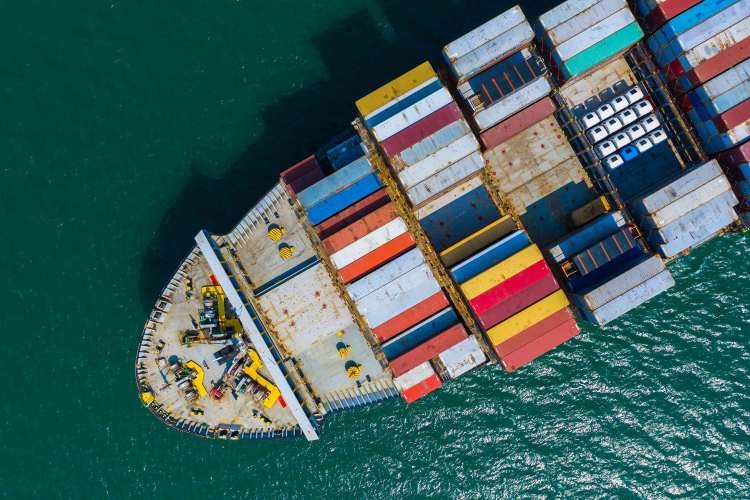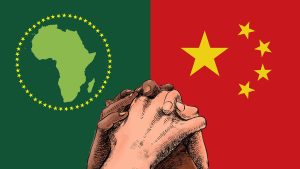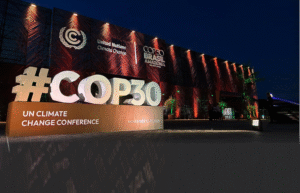Africa Becomes China’s Trade Lifeline as US Tariffs Reshape Global Flows

When the United States, under Donald Trump, imposed sweeping tariffs on Chinese goods in 2018, Beijing was forced to rethink its global trade map. Seven years later, the African continent has risen sharply in that reshuffle.
From across bustling markets in Lagos to the industrial zones of Addis Ababa and construction sites in Lusaka, evidence of China’s redirected trade strategy is everywhere. Starting with smartphones and solar panels to buses, clothing and construction machinery, etc., African cities and households have become the frontline recipients of China’s export surge.

To many African families and everyday lives, this new wave of trade has a tangible impact on daily life. In Accra, young entrepreneurs rely on affordable Chinese-made smartphones to run online businesses via WhatsApp and TikTok. In Nairobi, families are buying cheaper solar kits, often imported from China, to light up homes that still lack reliable electricity. Even in rural markets, traders selling inexpensive Chinese clothing and household goods have found new opportunities.
But affordability comes with a cost. Some local textile and manufacturing businesses have struggled to compete against the flood of lower-priced Chinese imports, raising difficult questions about long-term industrial development. “We cannot beat their prices,” many Africans would admit. Chinese phones are cheap to purchase, as such it helps most families to be inclusive in the social connectivity. Even then, most children use it for schoolwork. It is a complicated consumption market trend
A new economic geography of consumption market for Chinese products. Data backs up these shifts. Chinese exports to Africa have reached record levels in the past three years, defying global slowdown fears. The continent now absorbs everything from consumer electronics to industrial machines, with Beijing running a consistent trade surplus. Africa, meanwhile, exports mainly raw materials like copper, oil, cobalt, plastic, insects’ eggs/larvae, agricultural products, etc., in return.
This trade asymmetry echoes old patterns, where Africa provides resources and receives manufactured goods. Yet, unlike colonial trade models, Beijing often packages exports with infrastructure loans, railways, and technology transfer, weaving deeper economic interdependence.
In the case of politics and power, trade is never just about commerce. To the African governments, the Chinese export surge provides both opportunities and risks. On one hand, access to cheaper goods helps cushion inflation and improves living standards. On the other, dependence on Chinese imports can hollow out local industries and deepen debt vulnerabilities.

Politically, China’s growing footprint is also redefining global alliances, by promoting the yuan in African financial systems, from central bank reserves in Nigeria to cross-border settlements in Kenya. Beijing is not only selling goods, but also exporting financial architecture. This supports its ambition to challenge the US dollar’s supremacy.
African leaders, meanwhile, are navigating a delicate balancing act. They welcome Chinese trade and investment but are wary of public discontent over debt and competition with local producers. Protests in Zambia over Chinese ownership of local mines, or debates in South Africa about trade imbalances, reflect the simmering tensions beneath official state visits and ribbon-cutting ceremonies.
On the ground, the trade boom is reshaping cultural landscapes. Chinese businesses have set up shop across African capitals, introducing not only goods but also culinary tastes, work cultures, and social exchanges. African traders, in turn, travel to Guangzhou and Yiwu to source products directly, creating hybrid communities of commerce where Mandarin, Swahili and French mix in shipping depots and wholesale markets.
These people-to-people links blur the line between purely economic transactions and deeper cultural integration. Yet frictions persist. African workers sometimes complain of discrimination or harsh labor practices in Chinese-run factories, while Chinese communities face challenges integrating into local societies.
Africa’s growing role in its export story is part of a wider reordering of global trade for Beijing in the bigger picture. Locked out of parts of the American market by tariffs and facing rising scrutiny in Europe, China is betting on the Global South to absorb its industrial output. Africa, with its youthful population, fast-growing cities, progressive developmental transition of country-sides to suburbs and demand for affordable goods, fits neatly into that strategy.

However, for Africa, the choices are more complex. The influx of Chinese goods offers immediate benefits, lower prices, better access to technology and infrastructure upgrades, but it is rapidly allowing the risky scheme of reinforcing a dependency cycle. Policymakers in the African continent are challenged to negotiate trade that builds local industries rather than sidelines them.
At the crossroads of undefined decisions by African leaderships on socioeconomic decolonization emancipation from the Western/Asian socioeconomic-colonizers, and the unknown rebound of mix-actions/reactions from Africans, a street stall in Kinshasa host a vendor who arranges for sale, solar lanterns stamped Made in China, with a display of few copies. Would-be customers haggle, children watch and the rhythms of global economics find expression in simple purchases. It is in these everyday interactions between vendors and buyers, between continent and superpower that the future of Africa-China trade speedily being written.
Pro tem, the continent remains both a lifeline for Chinese exports and a testing ground for how Africa can leverage its growing importance in the world economy. The question is whether this trade wave will light the path to shared prosperity or expand the divides of the past in a new form.






